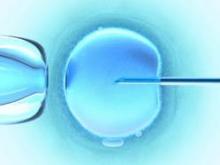The use of assisted reproductive technology appears to be low risk for women, according to new data showing that maternal complications were consistently low over a decade.
Among more than 1.1 million fresh autologous cycles of assisted reproductive technology (ART), 14,960 complications of any kind occurred, a rate of 131.8 per 10,000 autologous cycles. Complications were even lower among the 112,254 fresh donor cycles studied. A total of 336 complications of any kind occurred, a rate of 27.3 per 10,000 donor cycles.
Researchers examined complications reported between 2000 and 2011 to the Centers for Disease Control and Prevention’s National ART Surveillance System, which receives reports from 94% of all ART clinics in the United States.
The most common complication for both autologous and donor cycles was ovarian hyperstimulation syndrome (OHHS), reported Dr. Jennifer F. Kawwass of Emory University, Atlanta, and her colleagues. The study was published Jan. 6 in JAMA.
“Increased awareness of the most common complication, OHSS, may prompt additional study to characterize predictors of this and other adverse events to inform the development of effective approaches necessary to decrease complications,” the researchers wrote (JAMA 2015;313:88-90).
OHSS peaked at 153.5 per 10,000 autologous cycles. The next most common complication, hospitalizations, peaked at 34.8 per 10,000 autologous cycles.
All other complications – infection, hemorrhage requiring transfusion, medication adverse event, anesthetic complication, and patient death – occurred less than 10 times per 10,000 autologous cycles. Both medication adverse events and hospitalizations declined over the period studied, but there were no other changes in complication trends for autologous cycles.
Among the 58 deaths reported, 18 were attributed to stimulation, and 40 occurred during pregnancy prior to infant birth.
Among donor cycles, OHSS was the most common complication, peaking at 31 per 10,000 donor cycles, followed by hospitalizations, peaking at 10.5 per 10,000 cycles.
All other complications occurred less than 5 times per 10,000 cycles. There were no donor deaths, and 13 maternal deaths before birth occurred. But the researchers cautioned that complications may have been underreported to the surveillance system.
The study authors reported having no financial disclosures.


